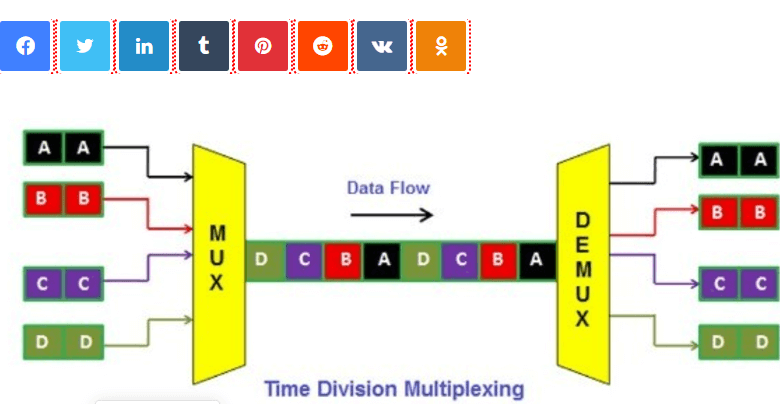TDM vs. FDM: Choosing the Right Multiplexing Strategy

As a means of improving communication networks and reducing resource consumption, multiplexing is essential for sending numerous signals over a single channel. Key multiplexing methods include Frequency Division Multiplexing (FDM) and Time Division Multiplexing (TDM). FDM divides the frequency band to handle several signals simultaneously, whereas TDM segments transmission by allocating time slots for each signal. Both methods have their advantages and disadvantages, which make them best suited for specific tasks. If you want to get the most out of your broadcasting and telecommunications systems, you need to know how TDM and FDM vary so you can choose the best approach.
What is TDM, and How Does It Work?
Overview of Time Division Multiplexing (TDM)
Due to the use of time slots, Time Division Multiplexing (TDM) allows numerous signals to share a single channel for transmission. Since digital communication makes use of time-segmented bits to decode messages, this technique is particularly applicable there. Different from asynchronous TDM, which allocates time slots dynamically according to data flow, synchronous TDM distributes fixed time slots to each signal independently of demand. Time-division multiplexing (TDM) systems enable data transmission to proceed without interruption by sending signals in a specific order. Digital audio systems and telephone networks both make extensive use of it to facilitate the efficient transfer of data.
Key Advantages of Using TDM
By sequentially enabling each signal to use the full channel capacity, TDM achieves high bandwidth efficiency. Applications necessitating quick data interchange can benefit from its structure, which guarantees decreased latency. In optical data transmission, in particular, TDM’s ease of deployment simplifies the network as a whole. Additionally, TDM is adaptable across a wide range of applications due to its support for both digital and analog systems. Satellite and telecommunication systems often choose time-division multiplexing (TDM) because its time-managed structure reduces signal interference and ensures that all users may use their assigned bandwidth without competition.
Limitations of TDM in Certain Applications
Although TDM works well, it does not excel at high-demand applications that do not care about latency. If certain time slots go unused, bandwidth is squandered, and the strict timeslot assignment could cause inefficiencies. Because TDM relies on exact timing techniques, synchronization across faraway places may be difficult, which might affect the quality of the transmission. As an example, TDM might not work as well in broadcasting or other situations requiring a continuous flow of data. When compared to other multiplexing schemes, such as FDM, TDM is not always the best choice for analog systems with unpredictable data flows because of its inefficiency in meeting demand.

What is FDM, and How Does It Work?
Overview of Frequency Division Multiplexing (FDM)
A technique called Frequency Division Multiplexing (FDM) allows for the simultaneous transmission of several signals over a single channel by dividing the frequency spectrum into separate bands. To reduce interference and allow for independent data transmission, each signal occupies a separate frequency. The ability to handle numerous data streams at once makes FDM a popular choice for analog systems. Since FDM assigns a distinct frequency to each signal, it guarantees that transmissions will not overlap, which is perfect for continuous transmission applications like radio and television broadcasting. Its layout makes it easier to separate signals at the receiver end, which keeps the data transmission clear and high-quality.
Key Advantages of Using FDM
Since FDM allows for the simultaneous transmission of data in a continuous fashion, it is well suited to real-time applications such as radio and television broadcasts. Its design guarantees low latency, so numerous signals can send and receive data without waiting for specific timeslots. By frequency-separated signals, FDM makes de-multiplexing easier, which improves data integrity and decreases interference. The system works with a variety of analog transmission media, including cable and fiber optics, and is easy to implement for analog communication. As a very effective multiplexing technique, FDM is ideal for applications that demand constant data flow.
Limitations of FDM in Certain Applications
One potential drawback of frequency division multiplexing (FDM) in settings with limited bandwidth is the large frequency range it demands. It is possible to degrade the signal quality at higher frequencies due to interference. Because every frequency band has to be pre-assigned, the system is not as adaptable since changes can not be made on the fly. Plus, in data-sensitive settings, FDM’s increased latency compared to TDM might affect performance for digital applications. Where bandwidth is scarce or where signal distribution changes frequently, FDM’s complicated interface and higher bandwidth requirements make it inefficient.
TDM vs. FDM: Which One is Better for Your Needs?
Comparing Signal Quality in TDM and FDM
As a result of its ability to precisely manage time, TDM typically provides digital systems with superior signal quality by reducing interference and crosstalk. Nevertheless, FDM offers more consistent signal clarity in analog and real-time applications because of its continuous data flow. Broadcasting and radio applications benefit from FDM’s ability to separate signals by frequency bands, which minimizes the chance of overlap and maintains quality. The data’s characteristics dictate the best method: time-sensitive applications benefit from TDM’s dependable performance, whereas uninterrupted, simultaneous data streams are best handled by FDM.
Analyzing Cost and Resource Efficiency
Since TDM sequentially utilizes the full bandwidth of a single channel, it is usually more resource-efficient. In digital systems, this architecture saves money by reducing the requirement for extensive bandwidth. However, operational expenses can rise because of the need for specialist equipment and large bandwidth in FDM. But in broadcasting and other real-time signal applications, FDM’s efficiency more than makes up for the price. When it comes to high-frequency applications, the performance benefits of FDM exceed the price, but TDM’s simplicity reduces setup costs. Budget and bandwidth availability are two factors that should be considered while choosing the optimal technique.
Choosing Based on Application Requirements
Your application’s unique requirements should be considered while deciding between TDM and FDM. Digital applications like telephony that depend on accurate time management are perfect candidates for time division multiplexing (TDM). For analog uses requiring continuous transmission, such as radio and television, FDM is the way to go. Using TDM can be beneficial if reducing latency and optimizing resource use are your top concerns. On the other hand, FDM is the way to go if you need to transfer data in real-time and all at once. The operational environment and data requirements determine the correct strategy for handling data flow and frequency allocation, as these are the areas where TDM and FDM differ.
How to Decide Between TDM and FDM for Network Optimization
Key Factors to Consider in Network Environments
When optimizing a network, it is necessary to consider aspects such as data type, latency needs, and available bandwidth. Because FDM requires a wide spectrum, it may not be practical to use it in contexts with restricted bandwidth, whereas TDM enhances channel efficiency. Because of its controlled timing slots, TDM is ideal for digital applications that require precise timing. Broadcasting on radio and television, on the other hand, is a perfect application for frequency division multiplexing (FDM). Network infrastructure complexity and maintenance costs also play a role in determining which of these approaches is best. If you want your multiplexing approach to meet the needs of your network, you should think about these things.
Tips for Implementing the Right Strategy
It is necessary to evaluate the communication infrastructure and usage needs in order to implement the appropriate multiplexing technique. Avoid data loss with TDM by keeping all channels in sync with one another. It is important to avoid interference when allocating frequency bands in FDM. Both techniques can benefit from regular monitoring of bandwidth utilization, which improves performance and ensures that frequency bands stay within prescribed bounds. Employees using TDM or FDM systems avoid mistakes with proper training. Also, to adjust to changing data needs, you should do assessments on a regular basis. For optimal performance and data security, the plan must be in sync with the needs of the network.
Common Use Cases for TDM and FDM
TDM facilitates the digital transmission of data over vast distances and finds widespread application in the telecommunications industry. It plays a crucial role in fiber optics, digital audio systems, and telephone networks. FDM, on the other hand, is fundamental to the broadcasting industry and serves as the foundation for radio and television transmissions. Additionally, it is compatible with analog data networks and first-generation mobile phones, both of which require constant signal transmission. Because of its multi-channel management capabilities, FDM is well-suited to any environment that demands continuous data flow. Familiarity with these use cases is helpful in choosing the optimal multiplexing method for individual operating requirements.
Conclusion
Application requirements, available bandwidth, and data type dictate the choice between time division multiplexing (TDM) and frequency division multiplexing (FDM). The low latency and cost-effectiveness of TDM make it a great choice for digital and time-sensitive applications. But FDM really comes into its own in broadcasting and other continuous analog applications. The difference between tdm and fdm lies in their approach to managing channel resources. One way for decision-makers to improve performance and cost is by thoroughly analyzing network demands and learning about the strengths of each multiplexing strategy. Data transmission over communication networks can be made efficient and reliable by adjusting the multiplexing technique to meet individual needs.






